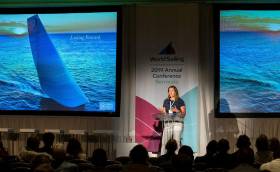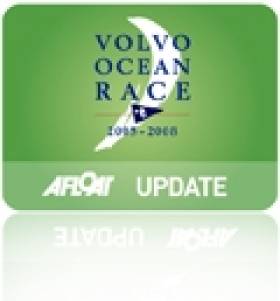Displaying items by tag: Dee Caffari
Two of Britain's most decorated female sailors will be teaming up for the upcoming 2022 Double Handed Offshore Season. Dee Caffari and Shirley Robertson will be sailing together throughout 2022 in the UK Double Handed Offshore Series, racing a new Jeanneau Sun Fast 3300 supplied by SeaVentures UK. The pair will be racing in seven offshore races throughout 2022 culminating in the gruelling 1,805nm Sevenstar Round Britain and Ireland Race.
One of the sport's most accomplished offshore sailors, Dee Caffari boasts a remarkable career that includes six laps of the planet, three of them solo. A maiden solo circumnavigation against the winds and tides, a sixth-place finish in the legendary Vendee Globe, and a double-handed circumnavigation in the Barcelona World Race have gone to make Dee the only woman ever to have sailed non-stop around the planet three times. Caffari has also twice completed the Volvo Ocean Race, in 2014/15 onboard 'Team SCA' and then in 2017/18 as skipper onboard 'Turn the Tide on Plastic'.
"Robertson and Caffari will be sailing in a newly delivered Sun Fast 3300"
Joining Caffari is one of the sport's most successful Olympic female sailors of all time, Double Olympic Gold medallist Shirley Robertson. With gold-medal wins in Sydney and Athens, Robertson was the first woman to helm a multihull on the groundbreaking Extreme Sailing Series, the forerunner to today's big stadium racing circuits, and is a regular on the superyacht racing circuit. In parallel to her sailing feats, Robertson has also forged a successful media career, presenting CNN's flagship monthly documentary series "CNN Mainsail" for over a decade. She is the face of Olympic sailing coverage for the BBC and played a key presenting role in coverage of the 36th America's Cup from Auckland, New Zealand.
Robertson and Caffari will be sailing in a newly delivered Sun Fast 3300, the boat both sailors raced throughout last season's offshore series. The 3300 is one of the go to race yachts of the growing double-handed scene and will be provided by Nigel De Q Colley's Sea Ventures UK.
Round-the-world sailing veteran Dee Caffari opened the Gender Balance: A Case for Change forum at World Sailing’s annual conference in Bermuda yesterday (Monday 28 October) with a call for key decision makers present to create positive change for women in sailing and tackle gender-based discrimination.
“We can no longer tick the box for the subjects of inclusion and diversity,” she told the gathering. “Diversity is a given and inclusion is an act and from the evidence, we need to act. Action can start right here in Bermuda with the key decision makers here.
“If we want our sport to progress and move forwards, then we need to consider 50% of the population otherwise we are going to be left behind and we might not like to hear it but deep down we all know it.”
World Sailing Trust chair Caffari was leading the presentation of its Women in Sailing Strategic Review, which noted that 59% of women and 14% of men have experienced gender based discrimination in sailing and that it is a global issue that happens at all ages.
It was also reported that discrimination occurs across all classes of sailing, with 71% experiencing it in multihulls, 64% in keelboats and 58% in dinghies, and that there is often stereotyping and a lack of opportunities for female sailors.
Ten recommendations were put forward on how to address gender balance in sailing and range from a gender charter, engagement of events and venues as well as implementing programmes for coaching, talent fast tracking and Olympic career transitioning.
The forum can be streamed on YouTube and the fill report will be published on the World Sailing Trust website towards the end of next month.
Dee Caffari Joins Team SCA For Volvo Ocean Race
#VOR - Record-breaking British yachtswoman Dee Caffari has confirmed her membership of Team SCA competing in this year's Volvo Ocean Race.
Writing on her website on Monday 17 March, the offshore specialist broke her radio silence since the New Year, saying she "had a lot of ground to cover" as one of the last women selected via the team's trials in Lanzarote, "especially compared to the girls that had been training as part of the team for the past year."
But now that the honorary Royal Navy commander and non-stop round-the-world record holder is officially part of the all-women squad preparing for October's first in-port races, she says its time to "move onto the next phase of training", putting in the miles on the new VOR 65 yacht with greater intensity.
In other VOR news, French sailing stalwart Charles Caudrelier has been named skipper of China's Dongfeng Race Team.
Instrumental to the success of Groupama in the last Volvo Ocean Race, the 40-year-old has called his appointment "a key step as a sailor and as a man".
Commenting on the challenges of leading the first all-Chinese crewed team in VOR history, Caudrelier said: “I’ve seen it on my skipper and friend Franck Cammas in the last race: being a skipper is a huge responsibility and it’s demanding from a human point of view.
"But I’ve learned from my past experiences and I want to take these skills further.”
The VOR website has more on the story HERE.






























































